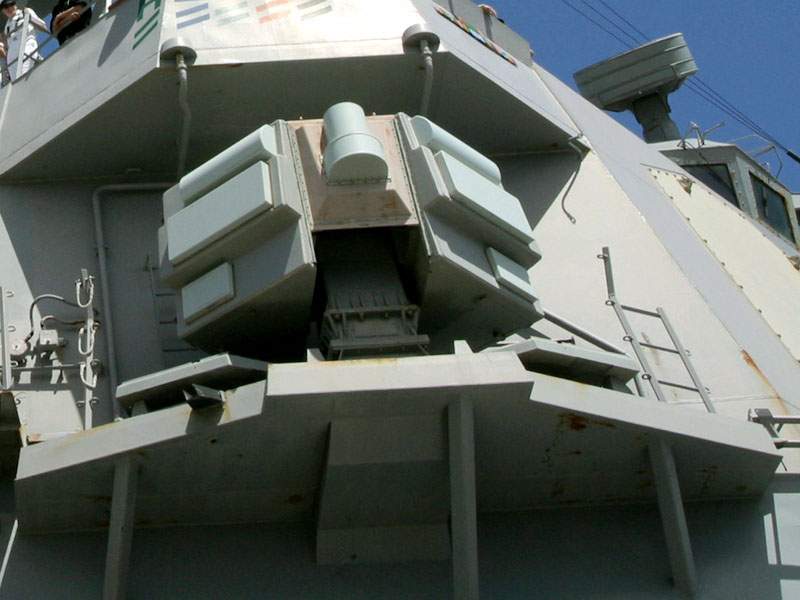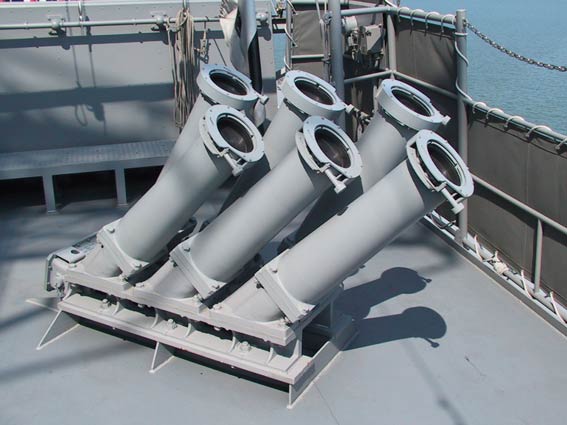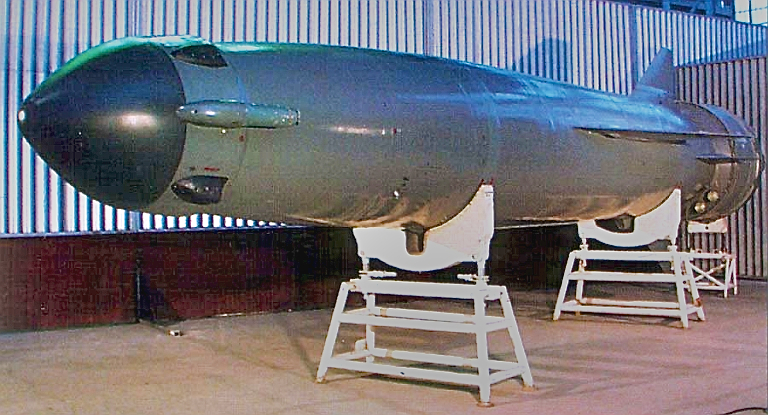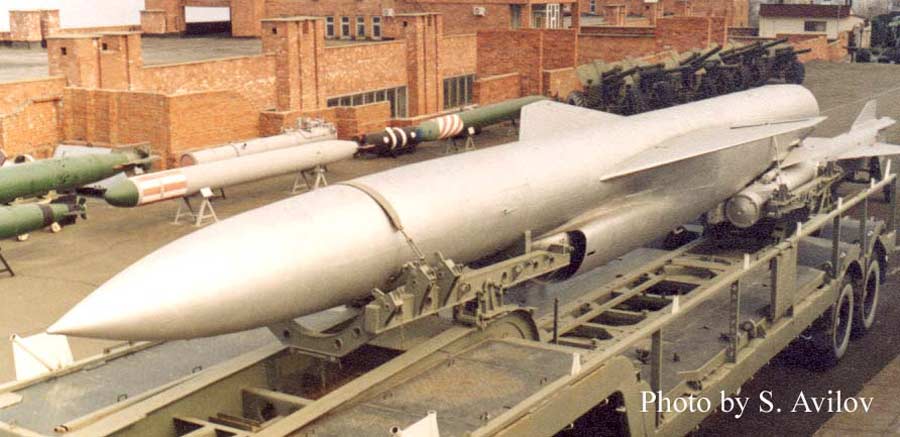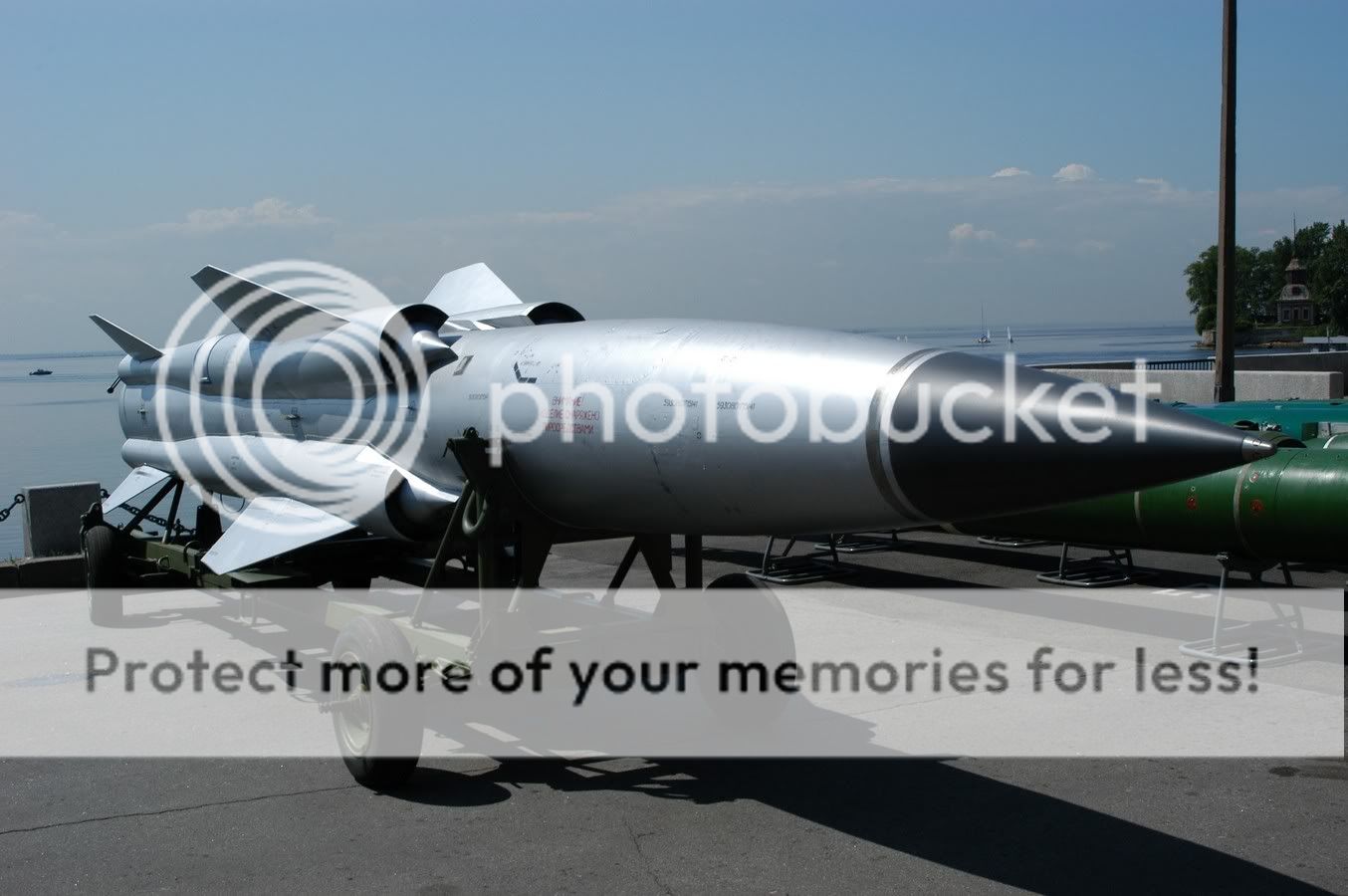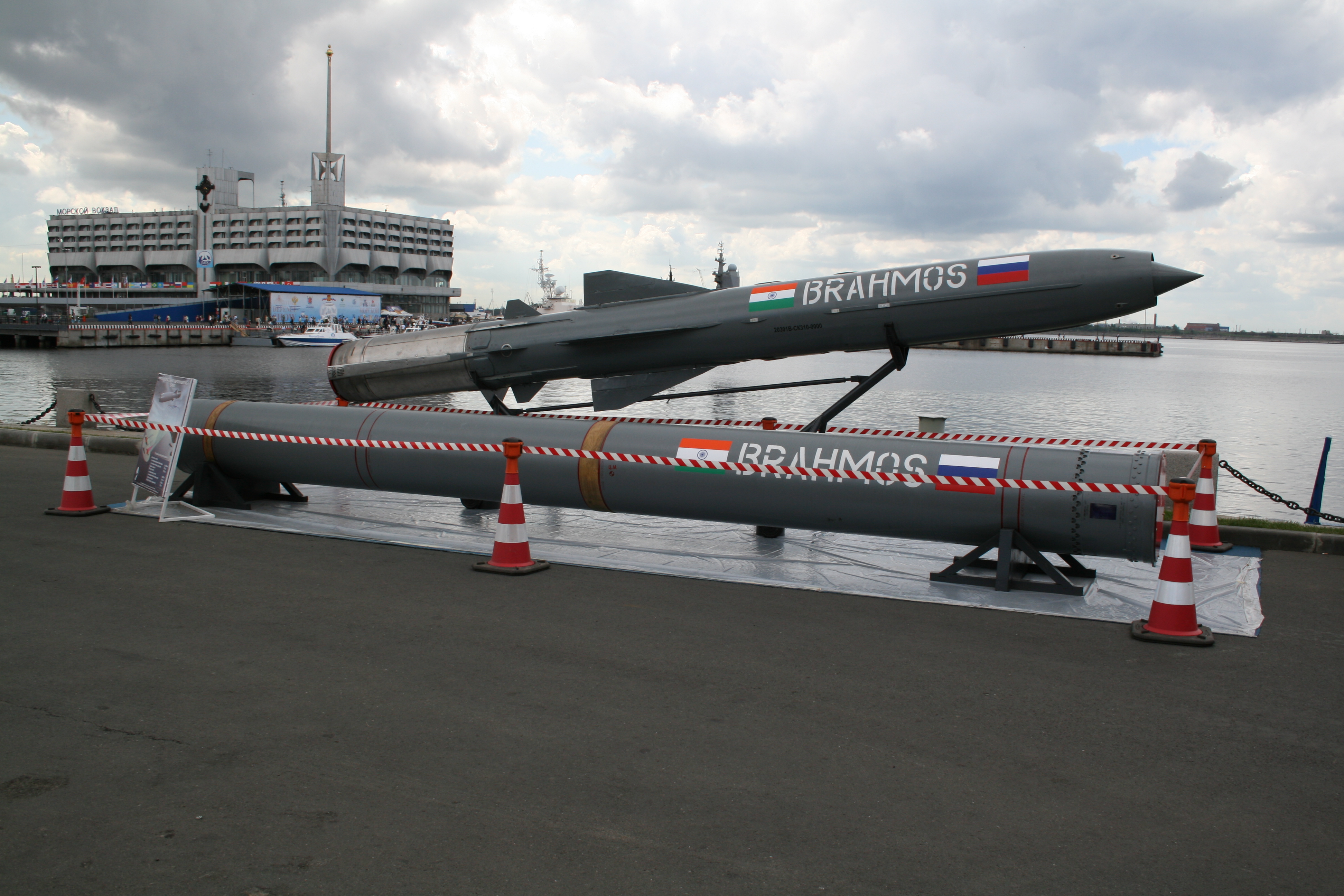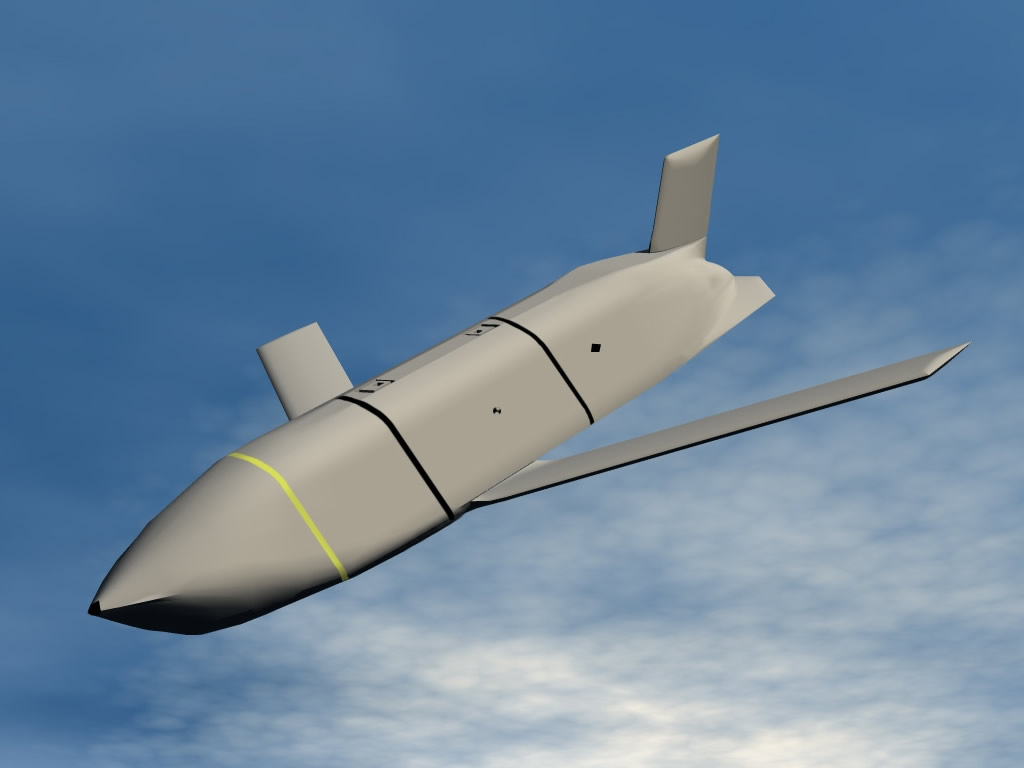Explained – How The US Navy Can Shoot Down The Deadly BrahMos Missile
This is the third part of the series. We have covered
introduction and
detection of anti-ship missiles in general in the earlier articles. We strongly suggest you to read those 2 articles before proceeding with this as it will give you a better idea of what is explained here. In this article we will specifically deal with shooting down the famous Indo-Russian Anti Ship missile, the BrahMos. This missile has been chosen as it is currently the fastest and probably the deadliest anti-ship missile in service. The Russian variant of
BrahMos is called
Onyx and the export variant is called
Yakhont. Its NATO reporting name is SS-N-26
Stallion. If you want to know how these missles work, i suggest you read my earlier article
here
Do note that no classified information is revealed in this analysis and all the data used are publicly released figures. The analysis uses logic, physics and mathematics with the available data in order to present a general idea of how it will be to face BrahMos and measures to counter it.
The main advantages of BrahMos are
- Mach 3 (2500-3000 km/hr) speed (which makes it very difficult to detect and track)
- 300 kg Semi-Armor piercing warhead (which causes massive damage upon impact)
- Very high kinetic energy on impact (which disintegrates smaller ships and cripples larger ones)
- S-manoeuver just a few seconds before impact (which makes interception very difficult)
- 300 km range in Hi-Lo altitude profile
- 400+ km range in Hi-altitude profile
- No wings (makes it harder to shoot down as winged missiles plunge into water after suffering wing damage)
The main disadvantages of BrahMos are
- Only 120 km range when using Lo-altitude sea-skimming profile
- Not intelligent ( can’t take evasive measures on its own to avoid interceptor missiles and follows predetermined path)

A Salvo of BrahMos © Saurav Chordia
There is a lot of rumor that the BrahMos is impossible to shoot down. This is mainly due to the fact that NATO missile defense systems were prepared to handle Mach 1-1.5 speed Anti-Ship missiles which Russia possessed during the Cold War. But after the Mach 2-3 speed Onyx/BrahMos was developed, it surprised the western world and it is unknown what specific measures have been taken to handle this supersonic threat. But the US Navy is well prepared to protect its fleet from such a threat. The stages involved in shooting down Onyx/BrahMos using modern anti-missile systems will be explained.
Burkes of the US Navy during a SAM firing exercise
Long Range SAM
The best part of using a long range SAM to defend a ship is that you can shoot the AShM launch platform itself (aircraft) before it can fire missiles at you! Since you eliminate the source of the threat, you ensure safety of the fleet. Long range SAM systems are those which fall in the 80-250 km category like SM-2, SM-6, Aster 30, HQ-9, SA-N-6 Grumble (Naval S300), 9M96E (Naval S400). But let’s consider the SAMs which are most likely to face the BrahMos.
The US Navy uses the SM-2 as its standard long range SAM on its destroyers. It has a range of 90+ km and uses a semi-active homing radar seeker which means that the mechanically scanning illuminators on board the warships should provide them with guidance. This proves to be a handicap as a Burke carries 3 centrally mounted SPG-62 illuminators which will find it difficult to deal with a multi directional missile attack. Normally, once the missile is detected at longer ranges if its following a high altitude profile, multiple SM-2 missiles are launched to counter the threat. 2-3 SAMs are fired against subsonic threats, so it is safe to assume that 4-5 SAMs will be fired at a single incoming BrahMos missile. Again, the SM-2 wasn’t designed to handle a missile flying at 3 times the speed of sound but designed to handle Soviet missiles flying at 1-1.5 times the speed of sound. So it’s going to be a very difficult task to shoot down BrahMos, as the attacking party will launch the BrahMos ideally 120 km away from the Burke to ensure a complete sea-skimming flight and to delay detection. The SM-6 is however is a different case and can intercept supersoonic missiles at sea-skimming altitudes and high altitudes as well. This will be a key weapon for the US Navy to defend its fleet against missiles like the BrahMos.

SM-2 being launched from the Mk41 VLS
Medium Range SAM
A Burke with its Octagonal SPY-1 radar visible
Let us consider a scenario in which a Burke class destroyer escorting a carrier battle group (CBG) is faced with a swarm of 8 BrahMos/Yakhont Anti-Ship missiles. Once the missiles are detected by the AWACS at 150+ km from the ship, the usual procedure would be to direct fighter jets from a nearby carrier towards the missile to shoot it down. But in this case, the missile is traveling at 3 times the speed of sound. Fighter jets will have 1/3 the time to react when compared to facing subsonic missiles. Hence the chances of a successful shoot down by fighters is less. But if we consider a solitary destroyer acting on its own, then the BrahMos will be detected at about 25-30 km from the ship. Considering a salvo of 8 BrahMos and that the missile travels at 1km/sec, the Burke has about 25-30 seconds to react. Launching long range missiles would be futile at this point because the missiles are closing in on the ship fast. The Medium range option available on the Burke is the 50 km range Evolved Sea Sparrow Missile (ESSM) which is quad packed and hence large quantities are available. This is very useful as one cell packs 4 MR-SAM compared to 1 LR-SAM. While intercepting supersonic anti-ship missiles, a large number of SAMs are fired to ensure successful interception. So in this case, we can consider about 16-24 ESSM ripple fired from the Burke towards the incoming missiles. We have 4 SAMs targeting each BrahMos missile and the probability of interception is ‘theoretically’ 100%. Practically, the BrahMos may break through these defenses.

Evolved Sea Sparrow Missile (ESSM)
But there’s a big flaw in this if you haven’t noticed. Firing 24 ESSM takes 24 seconds, 4 ESSM target 1 BrahMos, so 24 of these can target 6 BrahMos and by that time the last few ESSM have been fired, there are still 2 BrahMos missiles left untargeted and speeding towards the Burke. So what’s the flaw? Think ……….If 16 BrahMos missiles (the capacity of new gen Russian frigates and Indian destroyers) were fired instead of 8, the defense of the Burke would be saturated if it’s operating alone. The Phalanx CIWS and Softkill countermeasures would probably manage to counter 2 more BrahMos, but then you have 6 remaining supersonic anti-ship missiles with 300 kg semi-armor piercing warheads ramming at full speed into a 9000 ton destroyer. Hence we can assume the saturation limit for a single Burke stands at 12 BrahMos missiles. So if it goes one on one with a Russian frigate or Indian destroyer carrying 16 BrahMos, it’s not returning home.
US Navy Carrier Battle Group
So what did we learn from this? We learnt that if a ship possesses purely medium range SAM systems, its chances of survival are very low in a modern conflict. If it faces a missile like BrahMos, its chances reduced threefold. Hence many navies are opting for a layered defense system with AEW systems to protect their expensive warships. But there will be another doubt in your mind once you’ve read this. You’ll wonder how the AEGIS, which is the best in the world can’t deal with 20-30 missiles like BrahMos, and is the US Navy leaving its ships vulnerable to threats like these. The answer is yes and no. YES, The AEGIS is the best in the world because it can combine data from every ship and aircraft radar in the fleet ad draw a big picture of the surrounding airspace. It gets early data from E-2 aircraft which enables it to intercept missiles 100+ km from the fleet. And NO because even the worlds most advanced anti-missile system has a saturation limit. The exact value is not disclosed for obvious reasons, but considering a CBG will have 3 AEGIS equipped escorts in wartime, 48 fighters with 8 on Combat Air Patrol (CAP)and 2 E-2s will be airborne for providing Over The Horizon (OTH) radar coverage, the saturation limit for this CBG will be around 64 BrahMos missiles. The 300 km range of the BrahMos in mixed altitude flight and 120 km range in low altitude flight means that it cannot be fired from beyond the radar coverage of the CBG. Hence the deadliest delivery platform will be Russian Yasen subs which carry 32 Yakhont/BrahMos and can fire them while submerged. Now that we dealt with BrahMos against the famous AEGIS equipped Burke, let us see how other anti-missile systems fare against it.

INS Kolkata carries 16 BrahMos and 32 Barak-8
There is one specific missile which has been designed from scratch to shoot down BrahMos. It’s the Indo-Israeli Barak-8 SAM. This missile was primarily developed by Israel to equip its warships to protect them from the Yakhont missiles which its neighbor was procuring. Israeli ships carried only short range SAMs and didn’t have modern radars capable of handling a dedicated attack by its enemies using Yakhont missiles. The answer to this problem was the extremely agile and accurate Barak-8 which packed the best available technology into a medium sized missile. Since it was developed with Indian assistance, I assume that India would have provided classified data about BrahMos so that Barak-8 can be made into the ultimate missile killer for the Indian and Israeli Navy. With a max range of 70 km, it operates in conjunction with the MF-STAR radar which can detect sea skimming missiles at 30-35 km range. It combined a medium range and short range missile into one missile, having a minimum engagement range of just 300 m and max of 70 km. There are claims that a single Barak-8 can stop a BrahMos as close as 500 m from a ship. One of the reasons behind the claims is that the Barak-8 is very accurate and has an active homing radar seeker, 8which enables the ship to technically forget about the missile after its launch and the missile finds the target on its own although the ship does provide guidance and mid-course updates. Since the Barak-8 can have a continuous lock on the incoming missile with its own radar and the MF-STAR can guide 24 Barak-8 missiles to 12 targets simultaneously, the saturation limit for a Kolkata class destroyer against the BrahMos stands at 12 missiles. This however is a contradiction in itself as the Kolkata class carries the BrahMos as well as the Barak-8. This means that the Indian Navy deploys the poison and the antidote on the same platform.
From the above analysis, don’t jump to the conclusion that the Kolkata class is equal to the Burke in missile defense role. Since the Kolkata carries just 32 Barak-8 and Burke carries 96 SAMs which can be increased to 192+ by quadpacking ESSM, the Burke equals Kolkata in the saturation missile defense role against BrahMos only. The superior load of the Burke allows it to withstand sustained missile attacks with its massive missile load. The Burke has advantages and can shoot down missiles at 200 km range when paired with AEW assets, but the Kolkata cant. In this analysis, both are considered equal as we are dealing solely with the BrahMos missile against solitary warships.
Short Range (Point Defense) SAM
If you are in a situation where you have to use a short range SAM to shoot down an anti-ship missile, then you’re already in deep trouble. It means that the hostile incoming missile has managed to evade the umbrella of defense provided by longer range SAMs. Hence they form the last line of defense. The target ship has around 5-10 seconds to react if it’s a supersonic AShM and around 20-30 seconds to react if it’s a subsonic AShM because the range of these SAMs is in the 10-15 km category. A volley of 8-12 point defense SAMs are usually fired in order to shoot down 2-3 incoming AShMs. Since the AShMs are very close to the ship, there’s no second chance available to defend itself and so the target ship fires as many missiles as possible to defend itself in this do or die situation. The popular SR-SAM systems are RAM, Barak-1, Crotale, Gauntlet (Naval Tor) etc.
Rolling Airframe Missile (RAM)
So how does a ship defend itself against BrahMos using short range SAM systems? If these systems are part of a layered defense system, then they have to deal with only 1 or 2 missiles as the remaining BrahMos would have been neutralized by the longer ranged systems. This is a relatively simple task for systems like the Rolling Airframe Missile (RAM) or Barak-1 which are designed to kill sea skimming supersonic missiles. But even these can’t handle more then 2-3 BrahMos on their own as they have a range of 10 km which gives them just a few seconds to react ad only a few missiles can be fired in that time.
So if you’re on a warship which has only a short range SAM system for defense, and more than 2 BrahMos missiles are fired at you, your future is bleak. Your only hope is to close your eyes and accept the inevitable.
Anti-Missile Guns
Guns are extremely popular in modern day air defense systems due to their quick reaction times and the ability to shoot down targets at very short ranges. Most modern navies use Close in Weapon Systems (CIWS) which consists of a high rate of fire gun acting on its own or combined with short range SAM systems. Currently, the US Navy deploys Phalanx CIWS on all its destroyers. It is a closed loop system, with the search-tracking radar and the 20 mm Gatling gun and ammunition combined into a self-sustained system. It has a max range of 3 km and an effective range of 1.5 km when dealing with low flying cruise missiles. If it faces a single BrahMos which has bypassed other missile defense layers, the radar of the Phalanx locks on to the BrahMos and unleashes a torrent of 20 mm depleted uranium projectiles which should shred the BrahMos easily. But, that’s not going to happen. The Phalanx fires at 3000 rounds per minute which translates into 50 rounds per second. Since the BrahMos flies at 1 km per sec and the effective range of Phalanx is 1.5 km, it has just 1.5 seconds to shoot down the BrahMos when the BrahMos is 1.5 km away from the ship. And since BrahMos is travelling so fast, if you shoot it less than 500 km away from you ship, its fragments will still strike your ship at high speeds and cause damage. So BrahMos has to be engaged between 500 m and 1.5 km by the Phalanx. This gives it a total firing time of 1 second. And since it needs half a second to reach full rate of fire, only around 40 rounds can be fired in that time.
Phalanx CIWS
It doesn’t end here, BrahMos performs an S-manoeuver in its final few km of flight. This makes it extremely difficult for Phalanx to get a lock on BrahMos. It will have less than 2 seconds to lock on to a maneuvering target flying at 3 times the speed of sound. It is practically impossible for the Phalanx to shoot down BrahMos. Hence the US navy is replacing it with RAM on its bigger warships as it triples the range and gives a better chance of survival for a warship. But there is no RAM on Burkes and they have a single Phalanx only. The older variants have 2, but it’s not like it makes much of a difference. Phalanx is useful against subsonic targets and supersonic ones travelling at Mach 1-1.5. Against BrahMos, it’s useless.
The US Navy is working on a solution to this already. The answer is in their Laser CIWS system which has been operationally deployed recently. It is currently capable of shooting down slow aerial and surface targets, but with improvements, by the next decade, a laser CIWS would be widely deployed and would be capable of swatting multiple BrahMos missiles like flies. But then again, a hypersonic version of BrahMos is under development which will enter service in the next decade. Flying at Mach 5-7, it could prove to be a headache for lasers as well. But we’ll know that 10 years from now.
US Navy Ship board Laser Weapon
CONCLUSION
The BrahMos is not an invincible missile. It is just a bigger headache for the ones at the receiving end of it.
The BrahMos is not an invincible missile. It is just a bigger headache for the ones at the receiving end of it. With a decent SAM system, you may be able to defend your ship against attacks by subsonic missiles. But to defend yourself from the BrahMos, you need an expensive, high-end, layered missile defense system. If you have powerful and networked Air Defense systems like the US Navy and the Royal Navy, you have a chance of survival. But smaller navies using basic air defense systems don’t stand a chance. Their only hope is prayer. So if you’re a warship captain, it’s always safer to be on the side which has BrahMos/Yakhont than to be on the side which has to face the BrahMos. By your bad luck if you end up facing the BrahMos, prayer is another option.
Explained – How The US Navy Can Shoot Down The Deadly BrahMos Missile | Defencyclopedia










